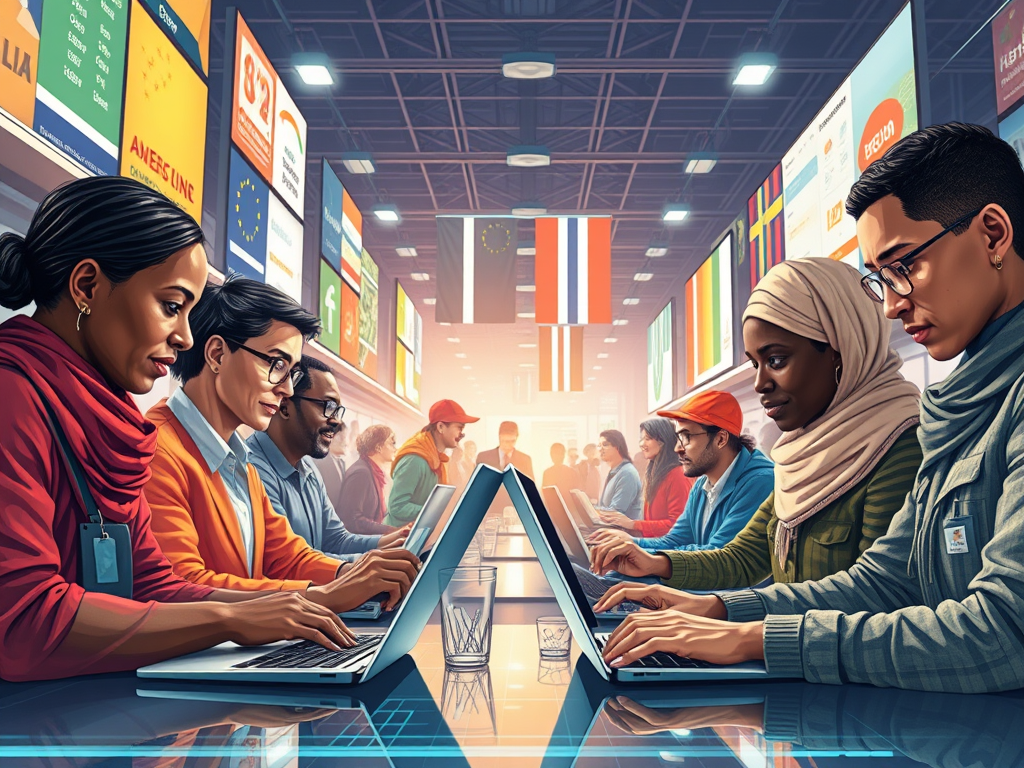The era of a borderless world
In a world where the barriers of geography and time zones have been dissolved by technology, understanding international trade finance has become an essential skill. The digital era, powered by the internet, microfinance, and globalization, has democratized access to global markets, allowing even small businesses and individual entrepreneurs to innovate and sell worldwide. Embracing international trade finance is not just a matter of economic literacy; it is a gateway to participating in the future of commerce.
The Digital Era: A Catalyst for Global Trade
The internet has transformed the world into a hyper-connected marketplace. Today, a designer in Lagos can sell products to customers in Tokyo, while a coder in Bengaluru collaborates with a team in Silicon Valley. This unprecedented level of connectivity has created opportunities that were unimaginable just a few decades ago. However, engaging in this global marketplace requires a solid understanding of international trade finance—a field that ensures transactions are secure, risks are managed, and cash flows are optimized.
From letters of credit to supply chain financing, trade finance tools provide the backbone for global commerce. These mechanisms mitigate the risks associated with cross-border transactions, such as currency fluctuations, payment defaults, and political instability. By understanding these tools, businesses can expand their operations globally with confidence.
Microfinance: Empowering Small Players
Microfinance has revolutionized global trade by providing financial access to those who were traditionally excluded from the banking system. Entrepreneurs in developing countries can now access the funds needed to bring their innovations to global markets. Platforms like Kiva and Grameen Bank have shown how microloans can empower individuals to participate in international trade, lifting entire communities out of poverty.
When combined with digital marketplaces such as Amazon, Alibaba, and Etsy, microfinance enables small players to compete on a global scale. The result is a more inclusive global economy where innovation thrives, regardless of geographic or economic boundaries.
Globalization: The Future of Commerce
Globalization is not merely an economic trend; it is the natural evolution of human progress. By fostering interconnectedness, globalization has led to the exchange of ideas, technologies, and cultures. It has driven economic growth, reduced poverty, and improved living standards for billions.
Critics of globalization often argue for isolationism, citing concerns about local industries and jobs. While these concerns are valid, history shows that isolationism stifles innovation and economic growth. Countries that embrace openness and collaboration tend to thrive, while those that turn inward risk being left behind in a rapidly evolving world. Consider the example of post-war Japan, which embraced globalization to rebuild its economy, transforming itself into a technological powerhouse.
The Risks of Isolationism
Isolationism, while appealing to some as a protective measure, is fundamentally counterproductive in today’s interconnected world. It limits access to new markets, reduces the exchange of ideas, and slows technological progress. Moreover, it often leads to economic stagnation and a decline in global influence.
The digital era has made it impossible to turn back the clock. Businesses and individuals who resist globalization miss out on opportunities for growth and collaboration. The history of trade—from the Silk Road to the modern era—demonstrates that prosperity has always been linked to openness and exchange.
Why Understanding Trade Finance Matters
For individuals and businesses, understanding international trade finance is not just a tool for success; it is a necessity in a globalized economy. Knowing how to navigate trade agreements, manage currency risks, and secure financing can make the difference between thriving in the global market and being left behind.
Educational initiatives should prioritize trade finance literacy, integrating it into curriculums at all levels. Entrepreneurs, especially those in developing countries, should have access to resources and training that empower them to participate in global trade. Governments and financial institutions must also play a role by simplifying trade finance processes and making them accessible to all.
Conclusion
The digital era and globalization have created a world of unparalleled opportunity. International trade finance is the key to unlocking this potential, enabling businesses and individuals to innovate, grow, and compete on a global scale. As the world becomes smaller, understanding the mechanics of global trade is not just advantageous—it is essential.
Isolationism, on the other hand, represents a retreat from progress and prosperity. History will favor those who embrace interconnectedness, collaboration, and the opportunities of a globalized economy. By equipping ourselves with the knowledge of international trade finance, we can ensure that we are on the right side of history, shaping a future defined by innovation, inclusion, and shared success.





Leave a Reply